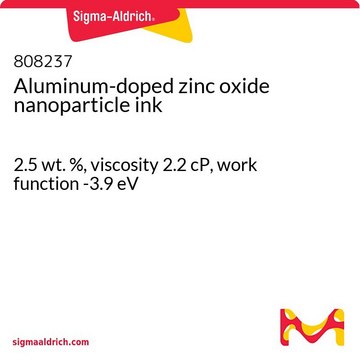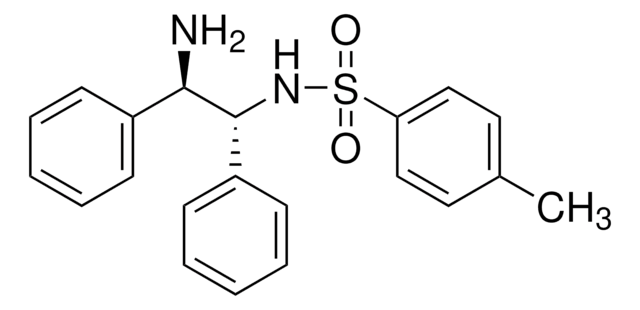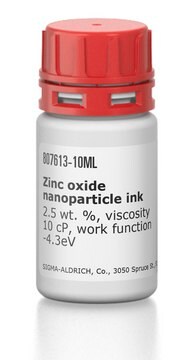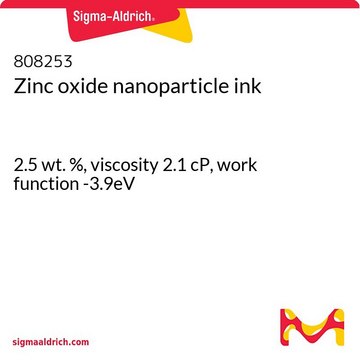807656
Aluminum-doped zinc oxide nanoparticle ink
2.5 wt. %, viscosity 3.2 cP, work function -4.3eV
Synonym(s):
AZO ink, Al-doped ZnO dispersion, Al-doped ZnO suspension, Al:ZnO ink, Avantama N-20X-Slot, Nanograde N-20X-Slot
About This Item
Recommended Products
form
dispersion
concentration
2.5 wt. % (crystalline Al doped ZnO (3.15 mol% Al) in 2-propanol and propylene glycol)
work function
-4.1--4.5 eV
color
translucent gray-brown
particle size
8-16 nm
viscosity
2.4-4.0 cP
Looking for similar products? Visit Product Comparison Guide
Application
Preparation Note
- Storage: In dark at room temperature
- Prior to application: Shake, ultrasonicate with sonic horn and (optionally) filter through 0.45μm PTFE filter
- Post-treatment: Annealing of deposited Al:ZnO films at >100°C
Legal Information
signalword
Danger
Hazard Classifications
Aquatic Chronic 2 - Eye Irrit. 2 - Flam. Liq. 2 - STOT SE 3
target_organs
Central nervous system
Storage Class
3 - Flammable liquids
wgk_germany
WGK 2
flash_point_c
11 °C
Choose from one of the most recent versions:
Certificates of Analysis (COA)
Sorry, we don't have COAs for this product available online at this time.
If you need assistance, please contact Customer Support.
Already Own This Product?
Find documentation for the products that you have recently purchased in the Document Library.
Articles
Professor Tokito and Professor Takeda share their new materials, device architecture design principles, and performance optimization protocols for printed and solution-processed, low-cost, highly flexible, organic electronic devices.
Recent progress in the area of solution-processed functional materials has led to the development of a variety of thin-film optoelectronic devices with significant promise in the industrial and consumer electronics fields.
Our team of scientists has experience in all areas of research including Life Science, Material Science, Chemical Synthesis, Chromatography, Analytical and many others.
Contact Technical Service









